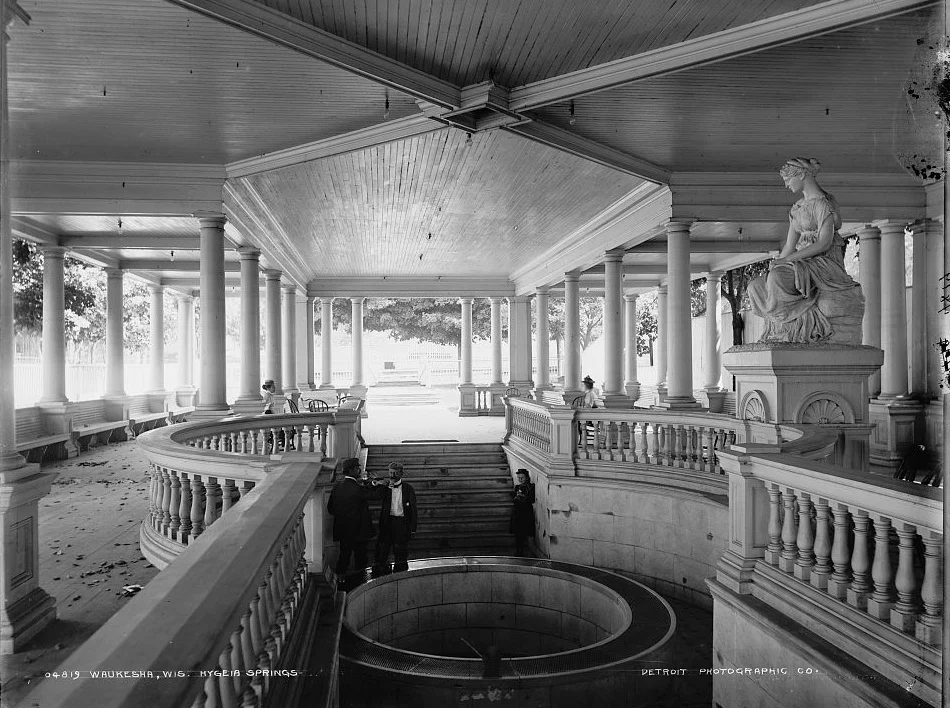
It’s not the first nor the most recent municipality to turn to the Great Lakes for its water.
Between September 14th and 18th, the city of Waukesha will transition to Lake Michigan water after 20 years of lobbying the Great Lakes Compact membership. The city’s own wells are contaminated with radium. The Great Lakes Compact makes exceptions for communities that “straddle” the boundaries of the compact cities on the shoreline.
The charter compact (from michigan.gov) reads:
The Compact prohibits new or increased diversions of water from the Great Lakes to areas outside the Great Lakes-St. Lawrence River Basin with provisions for the small number of straddling communities and those within straddling counties, which must first meet strict criteria to obtain approval. These criteria include conservation efforts, allotted water volume, and a 100 percent return flow requirement. The OGL and Michigan Water Use Program participate in regular Compact Council and Regional Body meetings and evaluate proposed water diversion applications.
In June 2016, the eight Governors of the Great Lakes Compact (including Quebec and Ontario) approved Waukesha’s request.
On June 30, 2021, the Wisconsin DNR gave its approval to Waukesha to run 35 miles of pipe to a Milwaukee pumping station and to a discharge channel in Franklin (30% of the pipeline had been completed at the time of the DNR approval).
The daily diversion of 8 million gallons of water is returned to Lake Michigan after treatment. The treated water is piped to the Root River which flows to the lake through Racine. The headwaters of the Root River now rise next to a Menard’s, a Home Depot, and clusters of houses in suburban West Allis. The Root River water will now be dominated by treated effluent at when water levels are low, particularly in the summer.
From https://www.wisconsinrivertrips.com/segments/root-river [2018]:
The Root River has historically suffered from industrial pollution and its substrate does contain excess amounts of phosphorous as well as some heavy metals.
In roughly the year 2022, a pipeline will be completed that will send Waukesha’s wastewater into the upper Root River (close to Oakwood Ave in Franklin). Waukesha’s ground water is currently contaminated with carcinogenic radium. Personally I suspect its huge 250′ open pit mines located near the downtown are partly to blame, but that is another story. Because Waukesha is located outside of the Great Lakes Basin (and isn’t a Chicago suburb) it can’t draw water from Lake Michigan legally. A compromise solution was created such that Waukesha will be able to use Lake Michigan water if it returns its wastewater to the Great Lakes…and it plans to do so through the Root River.
This will actually have a very positive impact on the Illinois Fox which is currently the unlucky recipient of Waukesha’s effluent. Currently the Fox is very weedy and I suspect it will be a much cleaner and more interesting paddle once the pipeline is completed.
But, this will dramatically change the Root River. There are different estimates of how much waste water will enter the Root, but my best guess is +90 CFS (which for a small river is a lot). I saw another estimate that this could increase river levels by 5 inches which would permanently smother some of the smaller boulder gardens and rapids. Another issue is this wastewater will carry a number of nutrients as well as phosphorous which will create weed issues on the river, especially along the slow sections. So all in all, kind of sad. The Root that I paddled likely won’t exist after 2022…it will still be navigable but will be a different experience.
The mines mentioned by the paddler are likely to have been in part responsible, though not as directly as described.
Interestingly, in the late 1800’s Waukesha was known the “Saratoga of the West” with more than 200 spring water companies and its own spa culture. In the 1870’s, Richard Dunbar, an Irish immigrant, began to popularize the waters in Waukesha as a healing resource, nicknaming the town “Spring City” and founding its first spring water company, Bethesda Spring. A salmonella outbreak in 1890’s Chicago contributed to an attempt by the Hygeia Springs Company owner James McElroy in Waukesha to build a pipeline to Chicago to sell its special waters. The proposed iron pipeline would end in a refrigeration plant, then the spring water pumped to Chicago vendors and 200 dispenser booths around the city. Waukesha citizens fought McElroy first in court, then as McElroy persisted in construction of his pipeline in the dead of night, they met him with an armed mob at the train station and ran him and his crew off to a neighboring town where he persisted until his bankruptcy.

As growth continued into the 20th century, Waukesha’s water demands increased, driven by new industries such as foundries attracted by the local supply of sand and sandstone and suburban growth from Milwaukee.
From JStor Daily [2017]:
Today, the city of Waukesha Water Utility estimates, its groundwater levels drop between five and nine feet every year, and a shale layer that covers its aquifer prevents local water from collecting quickly enough to sustain the city’s thirst.
More and deeper wells contributed to the drawdown of the aquifer, which is located in the “confined zone” of eastern Wisconsin, where a layer of shale separates the deep bedrock from a shallow layer of sandstone bedrock below the surface. This confined area is seeing increases in radium in groundwater:

From the Milwaukee Journal Sentinel [2020]: “Expressed in exact numbers, the average radium level in the confined region increased from 5.5 to 7.9 picocuries per liter (pCi/L) over this time period, while the level in the unconfined region increased from 4.8 to 6.6 pCi/L. The maximum contaminant level set by the U.S. Environmental Protection Agency for drinking water is 5 pCi/L.”
As Waukesha continued to drill and pump, radium continued to increase. In 1991 the EPA updated its radium exposure levels, and the city (alongside its allies the trade associations National Mining Association and the Nuclear Energy Institute) fought the EPA radium rule until losing in 2003. (https://caselaw.findlaw.com/court/us-dc-circuit/1213184.html)
The increase in radium was one of the factors that led Waukesha to seek Lake Michigan Water, but the steady depletion of the aquifer was the primary concern. From the Journal Sentinel [2020]:
Dan Duchniak, general manager of Waukesha Water Utility, noted that the city’s decision to opt for lake water had more to do with a slowly depleting aquifer and less to do with radium.
“The primary driver was the decline in the aquifer, which is unsustainable for long-term use because of a confining layer of shale that restricts recharge,” Duchniak said. “The radium issues are also a result of the drawdown in the aquifer.
“It is a serious issue, but was not the primary reason for seeking a new water supply.”
In 2010 the city began the process of seeking an exception to the Great Lakes Compact as a “straddling community” of the Great Lakes Basin. The straddling communities are in the Great Lakes Basin, but not adjacent to the lakes. Here’s the basin boundaries from the DNR:

The list of the (now 16) Wisconsin GLC water diversion exceptions is at https://dnr.wisconsin.gov/topic/WaterUse/Compact.html. The Village of Somers in Kenosha is the most recent “straddling community” to be approved by the DNR in 2022. 12 of the municipal exceptions had state approved diversions prior to the 2008 enactment of the GL Charter. Waukesha will be only the #3 highest user of Lake Michigan water in Wisconsin, after Pleasant Prairie and Portage. In total, Wisconsin communities in Waukesha, Kenosha, Racine, Columbia and Portage counties draw over 50 million gallons daily from the lake.
There was significant opposition to GLC approval of the project, including Michigan’s Attorney General Bill Schuette, Michigan Congresspersons Candice Miller, a Republican, and Debbie Dingell, a Democrat. Many have shown concern for setting a precedent that could lead to inclusion of eight other straddling communities in Indiana, Ohio and Wisconsin, notably Fort Wayne, Indiana, a city of about 270,000. Waukesha’s population is 70,000.
Sources:
- https://www.michigan.gov/egle/about/organization/office-of-the-great-lakes/protecting-great-lakes-freshwater
- https://www.wisconsinrivertrips.com/segments/root-river
- https://daily.jstor.org/clash-over-water-waukesha-wisconsin/
- https://dnr.wisconsin.gov/topic/WaterUse/Compact.html
- https://caselaw.findlaw.com/court/us-dc-circuit/1213184.html
- https://www.marketplace.org/2015/02/03/waukesha-spa-town-took-its-water-granted/
- https://www.jsonline.com/story/communities/waukesha/2020/03/04/uw-madison-study-finds-rising-radium-levels-wisconsin-water/4905416002/
- https://www.mlive.com/news/2016/06/waukesha_water_diversion_chica.html

